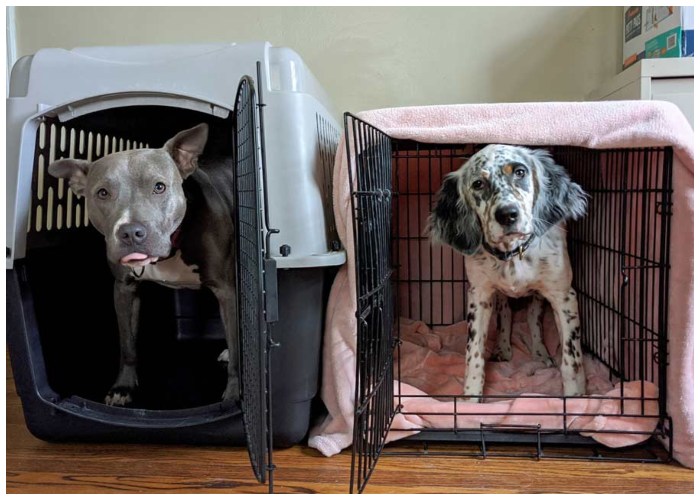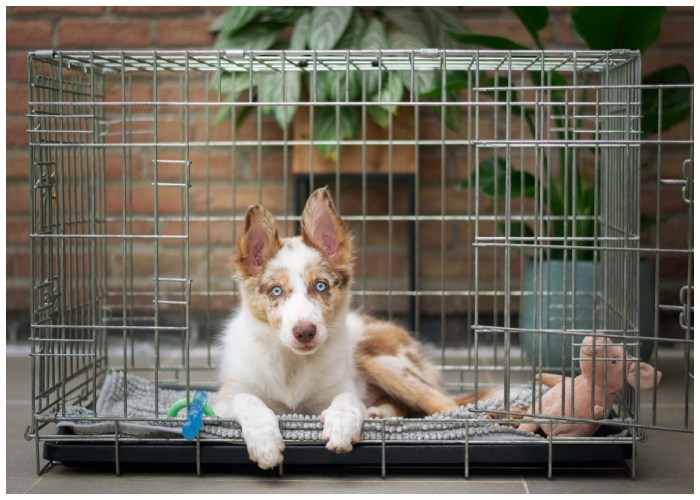Crate training is an essential part of raising a puppy, offering a safe space for times when you cannot give them your full attention and helping with toilet training, especially at night. When implemented correctly, crate training helps puppies feel secure and can prevent them from engaging in unsafe or unwanted behaviors.
Understanding Crate Training
Crate training involves teaching your puppy to see the crate as a safe and comfortable place. This space is particularly useful during times when direct supervision isn’t possible, such as during the night or when you’re occupied with other tasks. It ensures that your puppy stays safe, doesn’t get into trouble, and aids significantly in their toilet training. Puppies naturally avoid soiling their sleep area, which simplifies the process of housebreaking.

Benefits of Crate Training
The reasons to crate train a puppy are many. It simplifies travel with your pet, whether by car, train, or plane, and is beneficial during stays at hotels or visits to family and friends’ homes. Crate training is also invaluable for any overnight vet stays that may be necessary, or during recovery periods post-surgery. Furthermore, it is essential for successful toilet training and provides a safe environment that can help prevent your puppy from developing anxiety.
Choosing and Setting Up the Crate
Selecting the right crate is crucial; it should be spacious enough for your puppy to stand up, turn around, and lie down comfortably, but not so large that they can use one end as a bathroom. Place the crate in a location where you spend a lot of time, such as your living room, to help your puppy feel part of the family activities even when confined. At night, you might want to move the crate to your bedroom to keep your puppy close and provide comfort during their first nights in a new home.
Introducing Your Puppy to the Crate
Start by letting your puppy explore the crate voluntarily, perhaps enticed by treats or toys placed inside, which can help create positive associations. Feeding meals in the crate can also help your puppy grow comfortable with being inside; start with the door open and gradually progress to closing it for short periods while your puppy eats, extending the time after meals as they become more comfortable.

Creating a Positive Crate Experience
During the crate training process, it’s important to keep interactions positive and avoid using the crate as a punishment. If the puppy appears stressed or anxious, it’s better to slow down the training process to ensure they remain comfortable. As your puppy becomes accustomed to the crate, you can begin having them sleep there at night. Start by placing the crate near your bed to provide reassurance through proximity.
Transitioning Out of the Crate
As your puppy matures and gains more control over their bladder and behavior, you can gradually give them more freedom outside the crate. However, it should always remain available as their personal space. Remember, the goal of crate training is to create a positive and safe environment, not to isolate or punish your puppy. Crate training, when done correctly, is not cruel but a beneficial tool for both safety and behavioral management. With patience and consistency, your puppy will learn to love their crate as their own special retreat. For more tips on puppy training and care, consider exploring additional resources or consulting with a professional trainer.